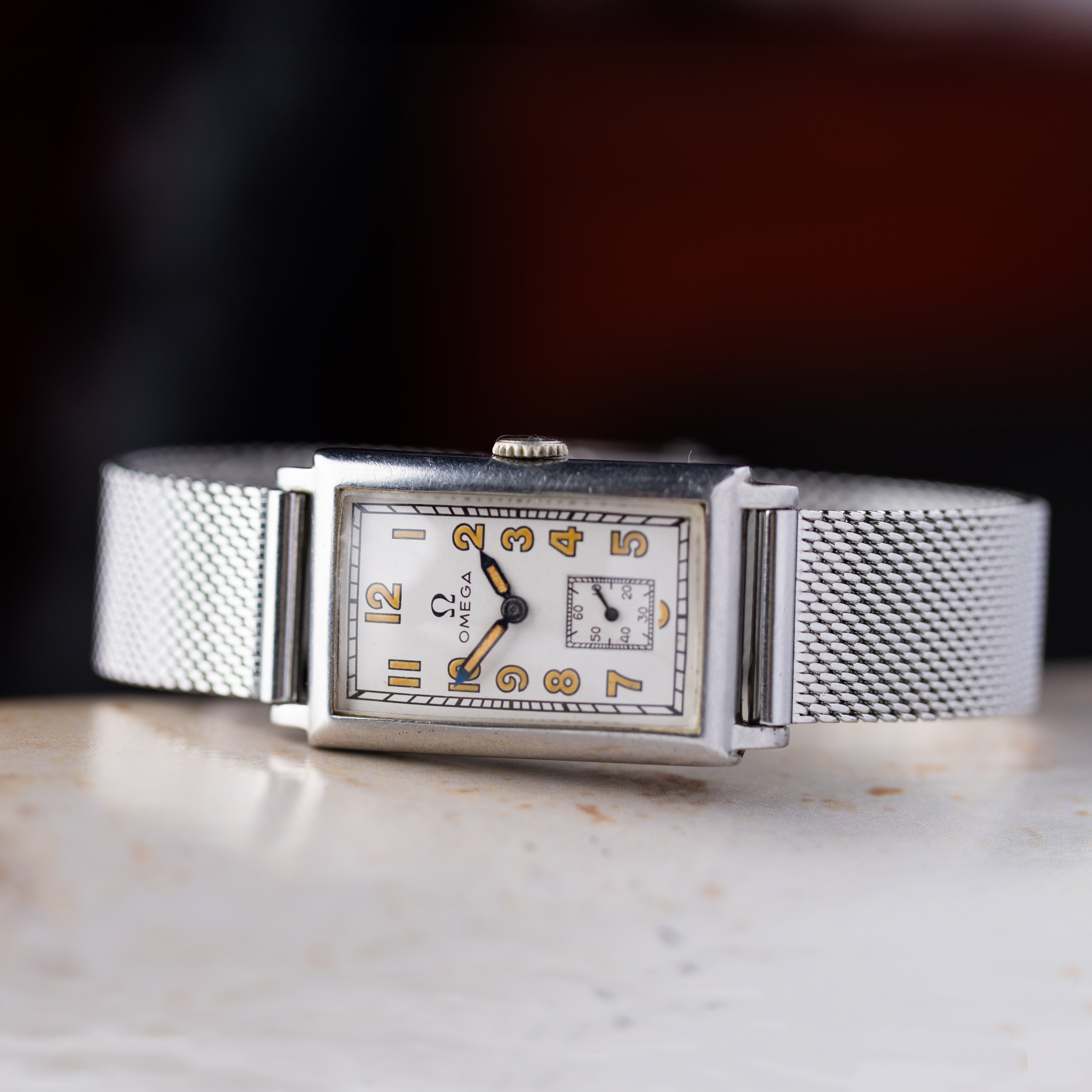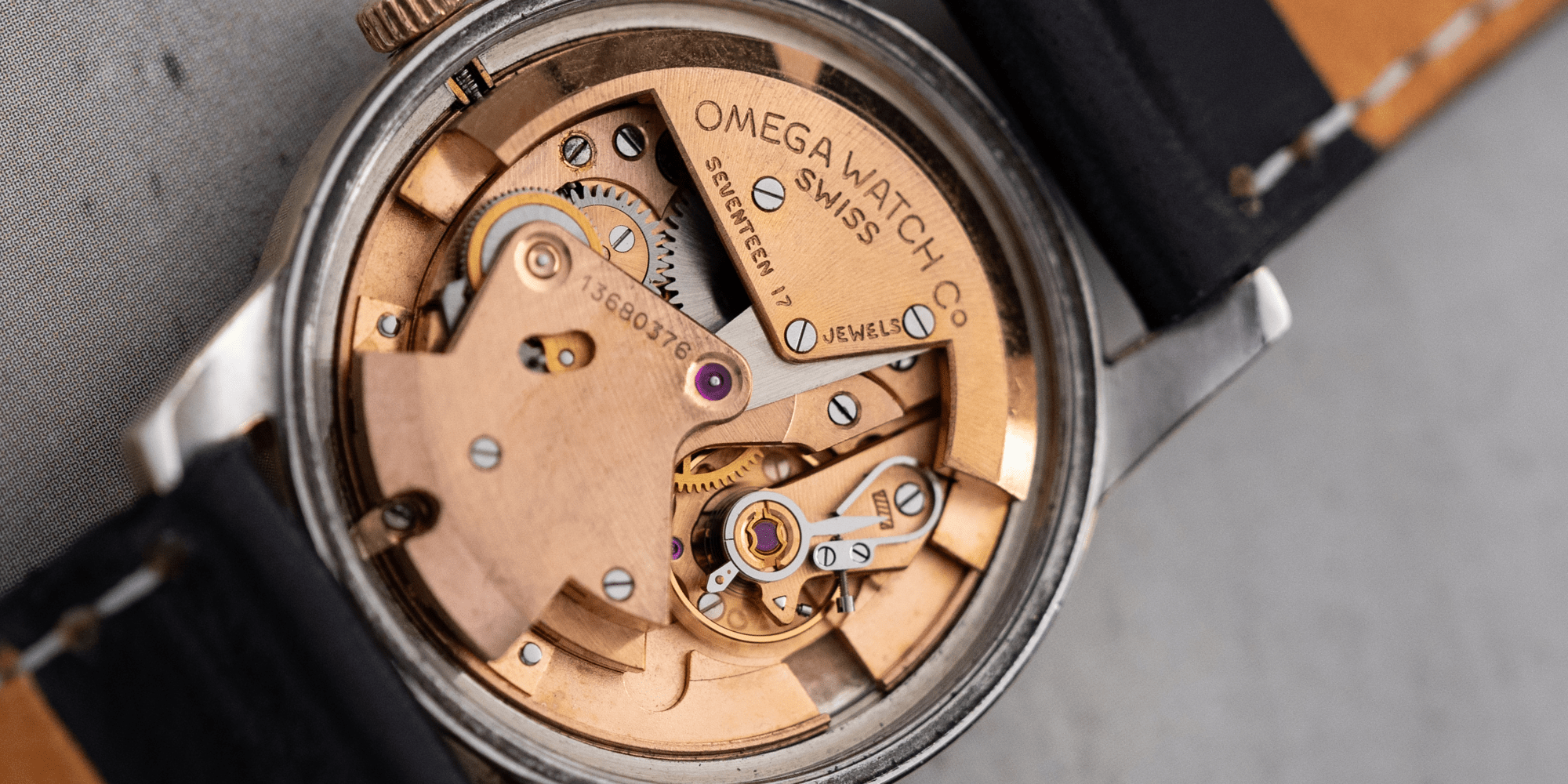When it comes to automatic watches, most collectors think of the modern rotor systems that rotate a full 360 degrees. But long before this innovation dominated the industry, another mechanism paved the way for self-winding wristwatches: the bumper automatic movement. This ingenious technology, which "bumped" its way into the hearts of watch enthusiasts, is a testament to the evolution of horology and remains a favorite among vintage collectors today.

Origins of the Bumper Automatic Movement
The story of automatic watches begins with a challenge: how to harness the motion of the wrist to power a watch. Early pioneers like John Harwood laid the groundwork for what would become the bumper movement. Harwood's 1923 invention, inspired by a children’s see-saw, patented the first self-winding wristwatch in 1924. Instead of a traditional manual winding mechanism, Harwood's watch featured a semi-circular weight that swung back and forth inside the case, transferring energy to the mainspring.
While Harwood’s innovation was groundbreaking, his company struggled during the Wall Street Crash of 1929. Nevertheless, his work laid the foundation for other brands to refine the concept. By the 1930s, watchmakers like Omega, Jaeger-LeCoultre, and Universal Genève began experimenting with similar self-winding systems, leading to the development of the bumper automatic movement.
How the Bumper Automatic Works
The bumper automatic mechanism is a marvel of mechanical ingenuity. At its core is a semi-circular rotor that swings back and forth within a limited arc, typically between 120 and 230 degrees. When the rotor reaches the end of its arc, it "bumps" against small springs or buffers, reversing its motion. This back-and-forth motion generates energy that winds the mainspring, powering the watch.
Unlike modern rotor systems, which rotate a full 360 degrees, the bumper movement's limited motion and distinctive "bumping" sensation made it unique. While the bumping was noticeable when worn, it became part of its charm, offering a tactile reminder of the mechanism at work.
Key Brands and Models Featuring Bumper Automatics
The bumper automatic movement reached its peak popularity between the 1930s and 1950s, with several renowned brands adopting and perfecting the design.
- Omega introduced its first mass-produced bumper movement, the Caliber 28.10RA PC, in 1943. This was later succeeded by famous calibers like the Caliber 342 and Caliber 354, which were housed in the brand’s iconic Seamaster and Constellation models.

- Jaeger-LeCoultre entered the bumper movement scene in 1946 with the Caliber 476 and, in 1948, introduced the Caliber 481, which featured a power reserve indicator—a significant innovation at the time.
- Universal Genève and other Swiss brands also embraced bumper automatics, cementing their place in watchmaking history.
These watches combined cutting-edge technology with timeless design, making them both functional and elegant.
Advantages and Limitations of Bumper Automatics
The bumper automatic movement was revolutionary in its time and brought several advantages:
- It allowed wearers to avoid manual winding, a major convenience.
- The design was durable and reliable, capable of functioning smoothly for years with proper maintenance.
- It marked a key milestone in the journey toward fully efficient self-winding systems.
However, the movement also had its limitations. The restricted rotor motion made winding less efficient compared to modern 360-degree systems. Additionally, some wearers found the bumping sensation distracting, though others embraced it as part of the watch’s charm. By the 1950s, bumper automatics were gradually phased out in favor of full-rotor designs, which offered smoother operation and greater efficiency.
Why Collectors Value Bumper Automatics Today
For vintage watch enthusiasts, bumper automatics hold a special allure. They represent an important chapter in watchmaking history and showcase the ingenuity of early automatic systems. The bumping motion, once a practical limitation, has become a nostalgic feature that collectors appreciate for its tactile charm.
Many bumper automatic watches are also housed in mid-century designs that have stood the test of time. From the sleek elegance of Omega’s Seamaster to the technical sophistication of Jaeger-LeCoultre’s Caliber 481, these watches continue to capture the imagination of collectors. Despite their age, well-maintained bumper automatics are highly reliable and functional, making them both a historical artifact and a practical timepiece.
How to Care for and Maintain Bumper Automatic Watches
Owning a vintage bumper automatic watch requires proper care to ensure its longevity. Given their age, regular servicing is essential to keep the mechanism in good working order. Since parts for specific calibers can be scarce, it’s important to work with watchmakers experienced in vintage movements.
Collectors should also preserve the originality of their watches, avoiding modifications that could reduce their value. Proper storage and gentle use will help maintain the watch’s condition, ensuring it can be enjoyed for years to come.
Conclusion
The bumper automatic movement is more than just a piece of horological history—it’s a symbol of innovation and craftsmanship. Though eventually replaced by full-rotor systems, the bumper’s unique design and historical significance have cemented its place in the hearts of collectors.
Whether you appreciate its technical ingenuity, vintage aesthetics, or the nostalgic charm of its "bump," a bumper automatic watch offers a tangible connection to the evolution of timekeeping. Do you own or dream of owning one of these fascinating timepieces? Share your thoughts or stories in the comments below!


